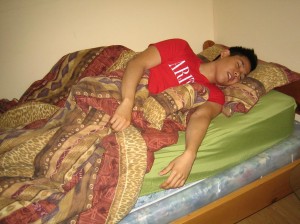Boils can cause severe pain and can be debilitating especially when they develop on the buttocks. A boil is a skin infection that forms in a hair follicle or the oil glands. Initially, the skin becomes red and a sore lump forms. After 4-7 days, the lump becomes white due to the buildup of pus under the skin. Boils can reach the size of a pea and grow as big as a golf ball.
https://www.youtube.com/watch?v=MVOiGPLcOkY
Symptoms of boils
- Fever
- Fatigue
- Redness of the affected area

Apply a warm compress on the boil and surrounding skin to encourage drainage and lessen pain. - Itchiness
- Inflammation
- Swollen lymph nodes
Causes
- Bacterial or fungal infection which enters the body through a scratch or damaged follicles of hair. The body reacts by fighting the infection with special white blood cells which causes symptoms such as pus and inflammation.
Treatment
- Apply a warm compress on the boil and surrounding skin to encourage drainage and lessen pain. Repeat the process several times every day. Gently rub the affected area in a circular movement.
- In a bathtub filled with warm water, mix uncooked or colloidal oatmeal and baking soda to relax the skin and heal the boil. Soak the affected areas for at least 10-15 minutes several times as needed.
- After draining the boil, keep the areas clean by washing with a mild antibacterial soap. Dab the area dry using a towel. Wash thoroughly the hands after touching the boil and anything that comes in direct contact with the boil such as towels, sheets, clothing and washcloth.
- In a glass of water, mix 1 tablespoon of colloidal silver which is a natural antibiotic and drink the solution at least 3 times every day for fast healing of the boil.
- Use saline solution which is a mixture of a cup hot water and a teaspoon salt. Dip a washcloth in the saline solution and apply on the boil for fast drainage and drying out of the boil. Repeat the procedure several times as needed.
- Avoid wearing tight-fitting clothes to prevent irritation of the skin.
- Take an over-the-counter pain medication such as ibuprofen or acetaminophen to lessen the swelling and pain.
- Apply the prescribed antibiotic or antiseptic cream on the affected area at least 2 times every day and cover the area with a bandage to keep it dry, clean and prevent spreading of infections.
